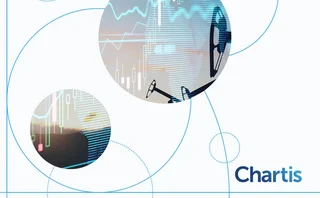
An encouraging shift in Asian LNG
Changes brewing in Asia are a reminder that trading can be a social good

Every once in a while, waves of change rip through the markets. Firms that had enjoyed immense pricing power suddenly find competitors nipping at their heels. Old ways of doing business fall by the wayside, replaced by new approaches that seemed unthinkable a few years earlier.
Such a transformation appears to be under way in the market for liquefied natural gas (LNG) in Asia, where the bulk of the world's LNG is consumed. It is an exciting development for commodity traders who don't often get to see a new market opening up – as well as for Asian consumers, who are likely to benefit from a more responsive, transparent pricing of LNG.
Ever since the world's first purpose-built LNG tanker, the Methane Princess, set sail in 1964, the LNG business has been dominated by long-term, fixed-volume supply contracts lasting as long as 20 to 25 years. Producers such as Qatar's RasGas justify such contracts by pointing to the huge costs of building facilities that can cool natural gas to -160 degrees Celsius and load it, in liquid form, into seaborne vessels. Consumers, though, have grown increasingly upset about such contracts, which ban them from diverting surplus cargoes to other buyers, among other unappealing provisions.
Perhaps the most onerous aspect of the traditional LNG contract, though, is the use of oil indexation to set the price. This would make sense if crude oil and natural gas prices were strongly correlated, with a predictable relationship that changed little over time. But lately, oil and gas have grown disconnected and, all too often, Asian consumers have found themselves paying more for their LNG than they would have if the contract had used some form of gas-on-gas pricing.
That's why the growth of LNG spot trading is so exciting. Short-term transactions of less than two years, rare at the turn of the millennium, now account for more than a quarter of volumes traded – and analysts expect the share to keep rising as new supplies come online from places such as the US and Australia. With greater liquidity in the spot market, LNG spot indexes can offer a real alternative to oil indexation. And if such indexes take off, derivatives linked to them are likely to gain momentum too, providing firms with ways to hedge their LNG price exposure.
It is worth striking a note of caution here. In the past half-decade, there have been repeated predictions of the imminent emergence of a traded LNG market, and the revolution hasn't quite arrived yet.
Still, the latest signs suggest that change is finally afoot. Analysts point to a significant overhang of supply by 2020, which would drive a big jump in spot transactions. Bullishness seems to be rising at banks, exchanges, trading houses and price reporting agencies, which are falling over each other to offer new LNG indexes or position themselves for the arrival of LNG as a traded commodity. There is a lively debate in the trading community over which regional hub is best suited to become the benchmark for Asian LNG, whether it be Singapore, Shanghai or some point in Japan or South Korea.
It is ultimately up to market participants to decide whether LNG trading will flourish and which index will be the most successful. Whatever happens, we'll be watching. After all, it's not too often that one can witness history in the making.
Only users who have a paid subscription or are part of a corporate subscription are able to print or copy content.
To access these options, along with all other subscription benefits, please contact info@risk.net or view our subscription options here: http://subscriptions.risk.net/subscribe
You are currently unable to print this content. Please contact info@risk.net to find out more.
You are currently unable to copy this content. Please contact info@risk.net to find out more.
Copyright Infopro Digital Limited. All rights reserved.
As outlined in our terms and conditions, https://www.infopro-digital.com/terms-and-conditions/subscriptions/ (point 2.4), printing is limited to a single copy.
If you would like to purchase additional rights please email info@risk.net
Copyright Infopro Digital Limited. All rights reserved.
You may share this content using our article tools. As outlined in our terms and conditions, https://www.infopro-digital.com/terms-and-conditions/subscriptions/ (clause 2.4), an Authorised User may only make one copy of the materials for their own personal use. You must also comply with the restrictions in clause 2.5.
If you would like to purchase additional rights please email info@risk.net
More on Energy
ETRM systems 2024: market update and vendor landscape
This Chartis report evaluates energy trading and risk management systems that provide front-to-back, asset class-specific and geography-specific coverage, and considers the full energy trade lifecycle
CTRM systems 2024: market update and vendor landscape
A Chartis report on commodity trading and risk management systems that considers its different applications and addresses the market and vendor dynamics to determine the long-term and structural impacts of the overarching market evolution on the…
Energy Risk Commodity Rankings 2024: markets buffeted by geopolitics and economic woes
Winners of the 2024 Commodity Rankings steeled clients to navigate competing forces
Chartis Energy50
The latest iteration of Chartis’ Energy50 ranking
Energy trade surveillance solutions 2023: market and vendor landscape
The market for energy trading surveillance solutions, though small, is expanding as specialist vendors emerge, catering to diverse geographies and market specifics. These vendors, which originate from various sectors, contribute further to the market’s…
Achieving net zero with carbon offsets: best practices and what to avoid
A survey by Risk.net and ION Commodities found that firms are wary of using carbon offsets in their net-zero strategies. While this is understandable, given the reputational risk of many offset projects, it is likely to be extremely difficult and more…
Chartis Energy50 2023
The latest iteration of Chartis' Energy50 2023 ranking and report considers the key issues in today’s energy space, and assesses the vendors operating within it
ION Commodities: spotlight on risk management trends
Energy Risk Software Rankings and awards winner’s interview: ION Commodities







